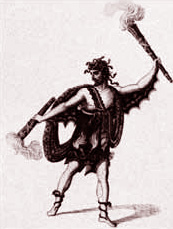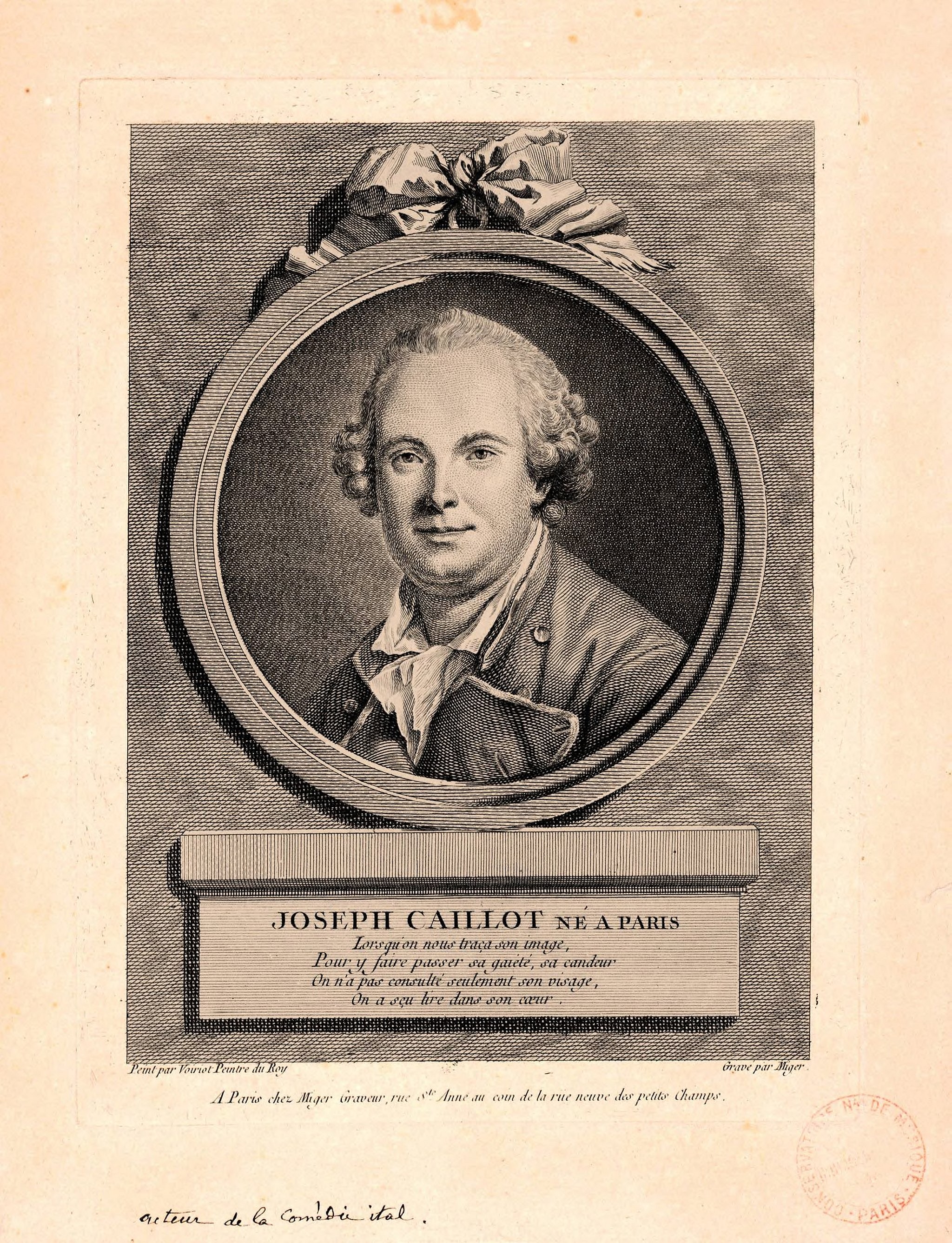|
L'école De La Jeunesse
''L'école de la jeunesse ou Le Barnevelt françois'' (''The School of Youth or The French Barnwell'') is an ''opéra comique'' (specifically a ''comédie mêlée d'ariettes'') in three acts by the composer Egidio Duni. The libretto, by Louis Anseaume, is based on George Lillo's play ''The London Merchant or The History of George Barnwell'' (1731). The opera was first performed at the Opéra-Comique in Paris on 24 January 1765. Main roles References ;Notes ;Sources *Original libretto''L'École de la jeunesse, ou Le Barnevelt français, Comédie. En trois Actes et en vers, mêlée d'ariettes'' Paris. Duchesne, 1775 *Original score''L'École de la jeunesse, ou Le Barnevelt françois, Comédie. En trois Actes et en vers'' Paris, Chez l'Auteur & Lyon, Chez Castaud, s.d. via Gallica * *Cook, Elisabeth (1992), "Ecole de la jeunesse, L'" in ''The New Grove Dictionary of Opera'', ed. Stanley Sadie Stanley John Sadie (; 30 October 1930 – 21 March 2005) was an influential and prolif ... [...More Info...] [...Related Items...] OR: [Wikipedia] [Google] [Baidu] |
Opéra Comique
''Opéra comique'' (; plural: ''opéras comiques'') is a genre of French opera that contains spoken dialogue and arias. It emerged from the popular '' opéras comiques en vaudevilles'' of the Fair Theatres of St Germain and St Laurent (and to a lesser extent the Comédie-Italienne),M. Elizabeth C. Bartlet and Richard Langham Smith"Opéra comique" '' Grove Music Online''. Oxford Music Online. 19 November 2009 which combined existing popular tunes with spoken sections. Associated with the Paris theatre of the same name, ''opéra comique'' is not necessarily comical or shallow in nature; '' Carmen'', perhaps the most famous ''opéra comique'', is a tragedy. Use of the term The term ''opéra comique'' is complex in meaning and cannot simply be translated as "comic opera". The genre originated in the early 18th century with humorous and satirical plays performed at the theatres of the Paris fairs which contained songs ('' vaudevilles''), with new words set to already existing music. ... [...More Info...] [...Related Items...] OR: [Wikipedia] [Google] [Baidu] |
Baritenor
Baritenor (also rendered in English language sources as bari-tenor or baritenore) is a portmanteau (blend) of the words "baritone" and "tenor." It is used to describe both baritone and tenor voices. In ''Webster's Third New International Dictionary'' it is defined as "a baritone singing voice with virtually a tenor range." However, the term was defined in several late 19th century and early 20th century music dictionaries, such as ''The American History and Encyclopedia of Music'', as "a low tenor voice, almost barytone sic.html"_;"title="'sic">'sic''" _In_opera Baritenor_(or_its_Italian_language.html" "title="sic">'sic''.html" ;"title="sic.html" ;"title="'sic">'sic''">sic.html" ;"title="'sic">'sic''" In opera Baritenor (or its Italian language">Italian form, ''baritenore'') is still used today to describe a type of tenor voice which came to particular prominence in Rossini's operas. It is characterized by a dark, weighty lower octave and a ringing upper one but with sufficient ... [...More Info...] [...Related Items...] OR: [Wikipedia] [Google] [Baidu] |
Stanley Sadie
Stanley John Sadie (; 30 October 1930 – 21 March 2005) was an influential and prolific British musicologist, music critic, and editor. He was editor of the sixth edition of the '' Grove Dictionary of Music and Musicians'' (1980), which was published as the first edition of ''The New Grove Dictionary of Music and Musicians''. Along with Thurston Dart, Nigel Fortune and Oliver Neighbour he was one of Britain's leading musicologists of the post-World War II generation. Career Born in Wembley, Sadie was educated at St Paul's School, London, and studied music privately for three years with Bernard Stevens. At Gonville and Caius College, Cambridge he read music under Thurston Dart. Sadie earned Bachelor of Arts and Bachelor of Music degrees in 1953, a Master of Arts degree in 1957, and a PhD in 1958. His doctoral dissertation was on mid-eighteenth-century British chamber music. After Cambridge, he taught at Trinity College of Music, London (1957–1965). Sadie then turned to musi ... [...More Info...] [...Related Items...] OR: [Wikipedia] [Google] [Baidu] |
The New Grove Dictionary Of Opera
''The New Grove Dictionary of Opera'' is an encyclopedia of opera, considered to be one of the best general reference sources on the subject. It is the largest work on opera in English, and in its printed form, amounts to 5,448 pages in four volumes. First published in 1992 by Macmillan Reference, London, it was edited by Stanley Sadie with contributions from over 1,300 scholars. There are 11,000 articles in total, covering over 2,900 composers and 1800 operas. Appendices including an index of role names and an index of incipits of arias, ensembles, and opera pieces. The dictionary is available online, together with ''The New Grove Dictionary of Music and Musicians''. References *William Salaman, "Review: The New Grove Dictionary of Opera", ''British Journal of Music Education'' (1999), 16: 97-110 Cambridge University Pres*John Simon, "Review: The New Grove Dictionary of Opera, 4 vols.", ''National Review'', April 26, 199* * *Charles Rosen, "Review: The New Grove Dictionary of O ... [...More Info...] [...Related Items...] OR: [Wikipedia] [Google] [Baidu] |
Antoine Trial
Antoine Trial (13 October 1737, Avignon – 5 February 1795, Paris) was a French singer and actor. He was the younger brother of the musician Jean-Claude Trial (1732–1771) and husband of soprano Marie-Jeanne Milon, stage name Félicité Mandeville (1746–1818). After an education at the cathedral in Avignon, he followed his older brother to Paris in 1764 and joined the troupe of the Prince of Conti. On 4 July the same year, he made his debut at the Comédie-Italienne as Bastien in ''Le Sorcier'' by Philidor. On 12 December he sang the second tenor (a comic role) at Versailles in the court revival of Mondonville's ''Daphnis et Alcimadure'', alongside the former stars of the Académie Royale de Musique, Marie Fel and Pierre Jelyotte.Cf. 1764 court libretto, ''Daphnis et Alcimadure, Pastorale languedocienne, Représentée devant leurs Majestés à Versailles, le 12 Décembre 1764'', Paris, Ballard, 1764 (accessible for free online aGallica.bnf.fr Although considered an excell ... [...More Info...] [...Related Items...] OR: [Wikipedia] [Google] [Baidu] |
Clef
A clef (from French: 'key') is a Musical notation, musical symbol used to indicate which Musical note, notes are represented by the lines and spaces on a musical staff (music), stave. Placing a clef on a stave assigns a particular pitch to one of the five lines, which defines the pitches on the remaining lines and spaces. The three clef symbols used in modern music notation are the #G-clefs, G-clef, #F-clefs, F-clef, and #C-clefs, C-clef. Placing these clefs on a line fixes a reference note to that line—an F-clef fixes the F below middle C, a C-clef fixes middle C, and a G-clef fixes the G above middle C. In modern music notation, the G-clef is most frequently seen as treble clef (placing Scientific pitch notation, G4 on the second line of the stave), and the F-clef as bass clef (placing F3 on the fourth line). The C-clef is mostly encountered as alto clef (placing middle C on the third line) or tenor clef (middle C on the fourth line). A clef may be placed on a space ins ... [...More Info...] [...Related Items...] OR: [Wikipedia] [Google] [Baidu] |
Marie-Thérèse Laruette
Marie-Thérèse Laruette (1744 –1837) was a French opera singer and playwright from Paris. She was a member of the troupe of the Comédie-Italienne, with which the Opéra-Comique was merged in 1762. Biography She was born Marie-Thérèse Vilette, the daughter of a master Parisian tailor who lived in Paris near the Opera and the Comédie-Italienne theaters. After noticing that his daughter was "addicted to the theater", her father took steps to make sure she acquired the education she would need to pursue an operatic career. At 14 years of age, Marie-Thérèse sang soprano for the first time at the Opéra-Comique. She made her professional debut at the Paris Opéra in 1758 before moving to the Comédie-Italienne in 1761. There she performed operas by Monsigny and Grétry, in particular '' Le déserteur'', in which she created the leading role of Louise, in 1767. At 17 years of age, she married, Jean-Louis Laruette (1731–1792), who was a singer and a composer in the Com� ... [...More Info...] [...Related Items...] OR: [Wikipedia] [Google] [Baidu] |
Soprano
A soprano () is a type of classical female singing voice and has the highest vocal range of all voice types. The soprano's vocal range (using scientific pitch notation) is from approximately middle C (C4) = 261 Hz to "high A" (A5) = 880 Hz in choral music, or to "soprano C" (C6, two octaves above middle C) = 1046 Hz or higher in operatic music. In four-part chorale style harmony, the soprano takes the highest part, which often encompasses the melody. The soprano voice type is generally divided into the coloratura, soubrette, lyric, spinto, and dramatic soprano. Etymology The word "soprano" comes from the Italian word '' sopra'' (above, over, on top of),"Soprano" '' |
Joseph Caillot
Joseph Caillot (24 January 1733, in Saint-Germain l'Auxerrois, Paris – 30 September 1816, in Paris) was a French actor and singer. He was endowed with a very wide compass which enabled him to sing as a basse taille ( bass-baritone), while also reaching the haute-contre tones. According to Rodolfo Celletti "he was a baritenor and a bass at the same time": Grétry and Monsigny used to notate his parts in the bass clef, but set them in high- baritone tessiture.''Voce di tenore'', Milan, Idealibri, 1989, p. 59, References Bibliography *Émile Campardon, '' Les Comédiens du roi de la troupe italienne'', Paris, Berger-Levrault et Cie, 1880, vol. I, pp. 85–95. 1733 births 1816 deaths Male actors from Paris French male stage actors 18th-century French male opera singers 18th-century French male actors {{France-stage-actor-stub ... [...More Info...] [...Related Items...] OR: [Wikipedia] [Google] [Baidu] |
Tessitura
In music, tessitura (, pl. ''tessiture'', "texture"; ) is the most acceptable and comfortable vocal range for a given singer or less frequently, musical instrument, the range in which a given type of voice presents its best-sounding (or characteristic) timbre. This broad definition is often interpreted to refer specifically to the pitch range that most frequently occurs within a given part of a musical piece. Hence, in musical notation, ''tessitura'' is the ambitus, or a narrower part of it, in which that particular vocal (or less often instrumental) part lies—whether high or low, etc. However, the tessitura of a part or voice is not decided by the extremes of its range, but rather by the share of this total range which is most used. Hence, it is referred to as the "heart" of a range. For example, throughout the entirety of Wagner's ''Ring'', the music written for the tenor role of Siegfried ranges from C to C, but the tessitura is described as high because the phrases are mos ... [...More Info...] [...Related Items...] OR: [Wikipedia] [Google] [Baidu] |
Bass Clef
A clef (from French: 'key') is a musical symbol used to indicate which notes are represented by the lines and spaces on a musical stave. Placing a clef on a stave assigns a particular pitch to one of the five lines, which defines the pitches on the remaining lines and spaces. The three clef symbols used in modern music notation are the G-clef, F-clef, and C-clef. Placing these clefs on a line fixes a reference note to that line—an F-clef fixes the F below middle C, a C-clef fixes middle C, and a G-clef fixes the G above middle C. In modern music notation, the G-clef is most frequently seen as treble clef (placing G4 on the second line of the stave), and the F-clef as bass clef (placing F3 on the fourth line). The C-clef is mostly encountered as alto clef (placing middle C on the third line) or tenor clef (middle C on the fourth line). A clef may be placed on a space instead of a line, but this is rare. The use of different clefs makes it possible to write music for ... [...More Info...] [...Related Items...] OR: [Wikipedia] [Google] [Baidu] |




